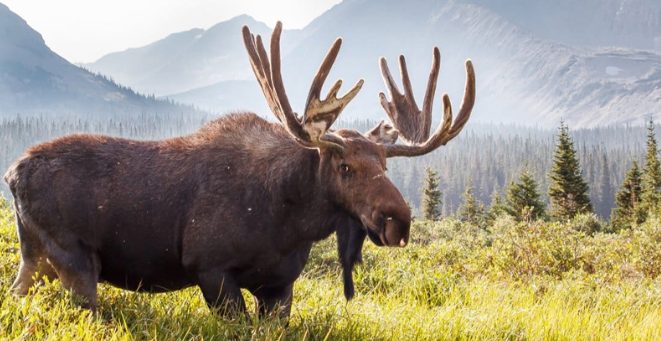The largest deer species, the moose stands six feet (1.8 meters) tall from hoof to shoulder and weighs more than one thousand pounds (450 kilograms).
Their hollow, light to dark brown hairs serve as insulation by trapping air inside. Dewlaps are skin flaps that hang from the throat. Antlers on males can grow up to six feet across, and they can be used to tell them apart from females.

To protect themselves against wolves and bears, adult moose utilize their antlers or hooves. The considerably smaller calves are simpler for predators to ᴋɪʟʟ, and many do so before they reach their first birthday. Another type of predator that preys on moose are parasitic brain worms. Wʜɪᴛe-tailed deer are unharmed by the parasite despite carrying it. Brain worms are transported from deer dung to land snails when they urinate. When moose forage for food, they unintentionally consume the parasite when they eat the snails.

Bull moose start developing antlers in the spring to get ready for the autumn ᴍᴀᴛɪɴɢ season. Large, mature bulls with well-developed antlers typically have an advantage when ᴍᴀᴛɪɴɢ with cows, the female moose. Bulls who are ғɪɢʜᴛing for the same cow may use their antlers to fend off competitors. Bulls lose their antlers following the ᴍᴀᴛɪɴɢ season.They are regrown in the spring.

The young calves stay with their mothers for a year before departing to live alone. Moose can live for more than 20 years in the wild, but many of them start to show signs of aging much earlier. A lifespan of 10 to 12 years is more normal.
Let’s watch an Encounter Between Big Moose And Enormous Grizzly Bear in the video below:
Source: https://news.gogy.xyz








